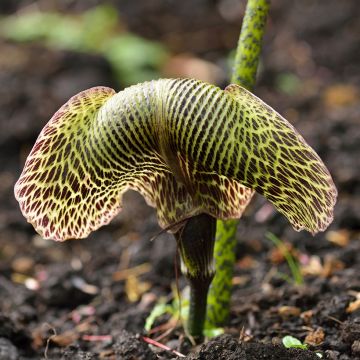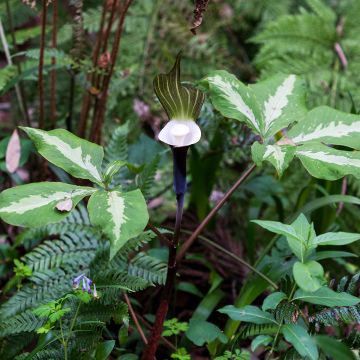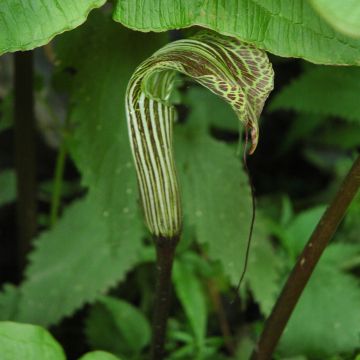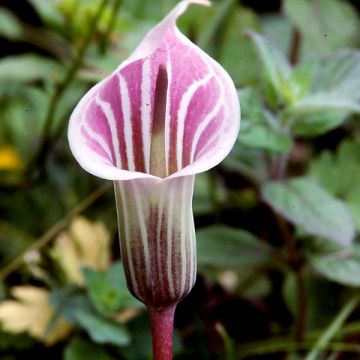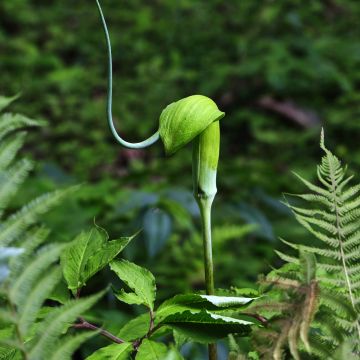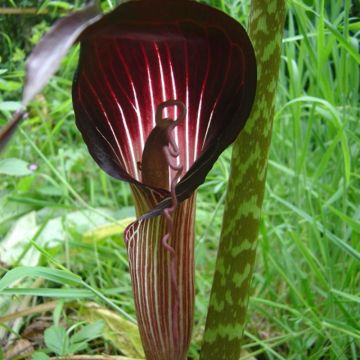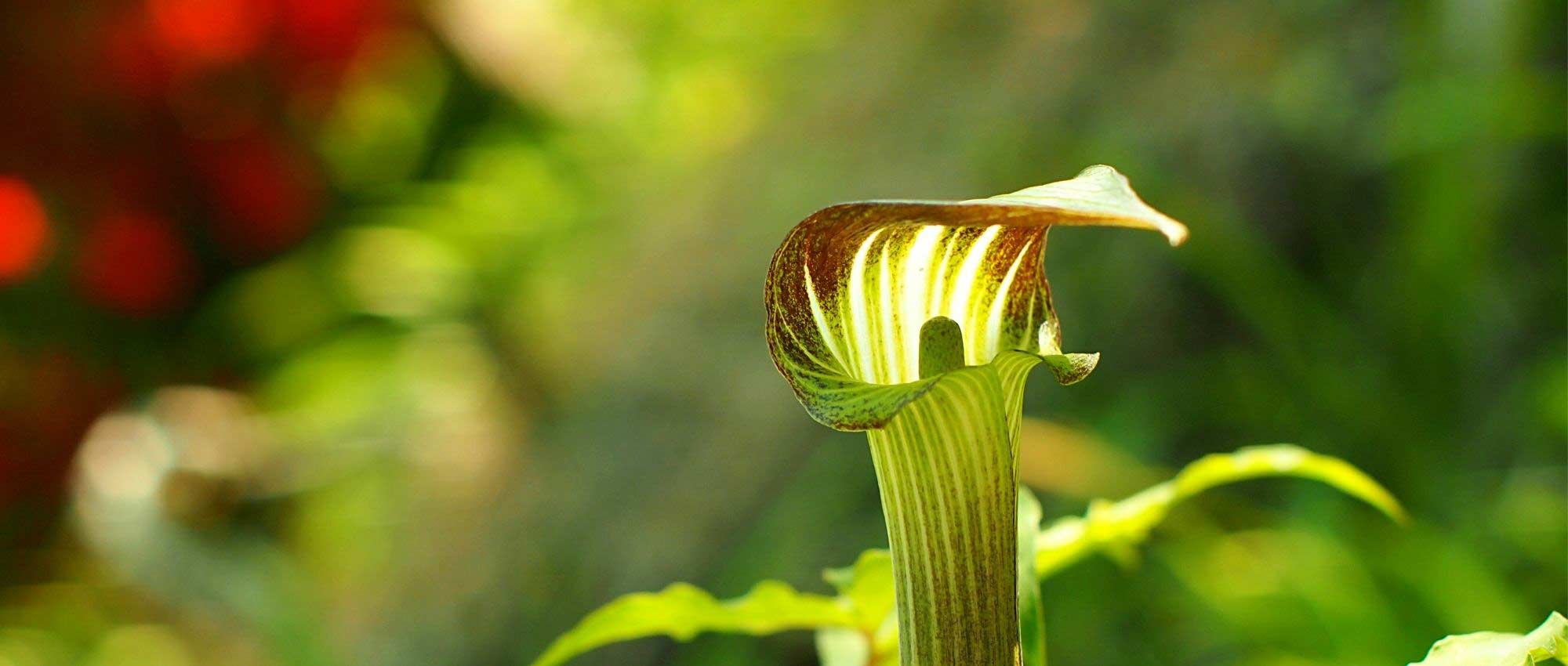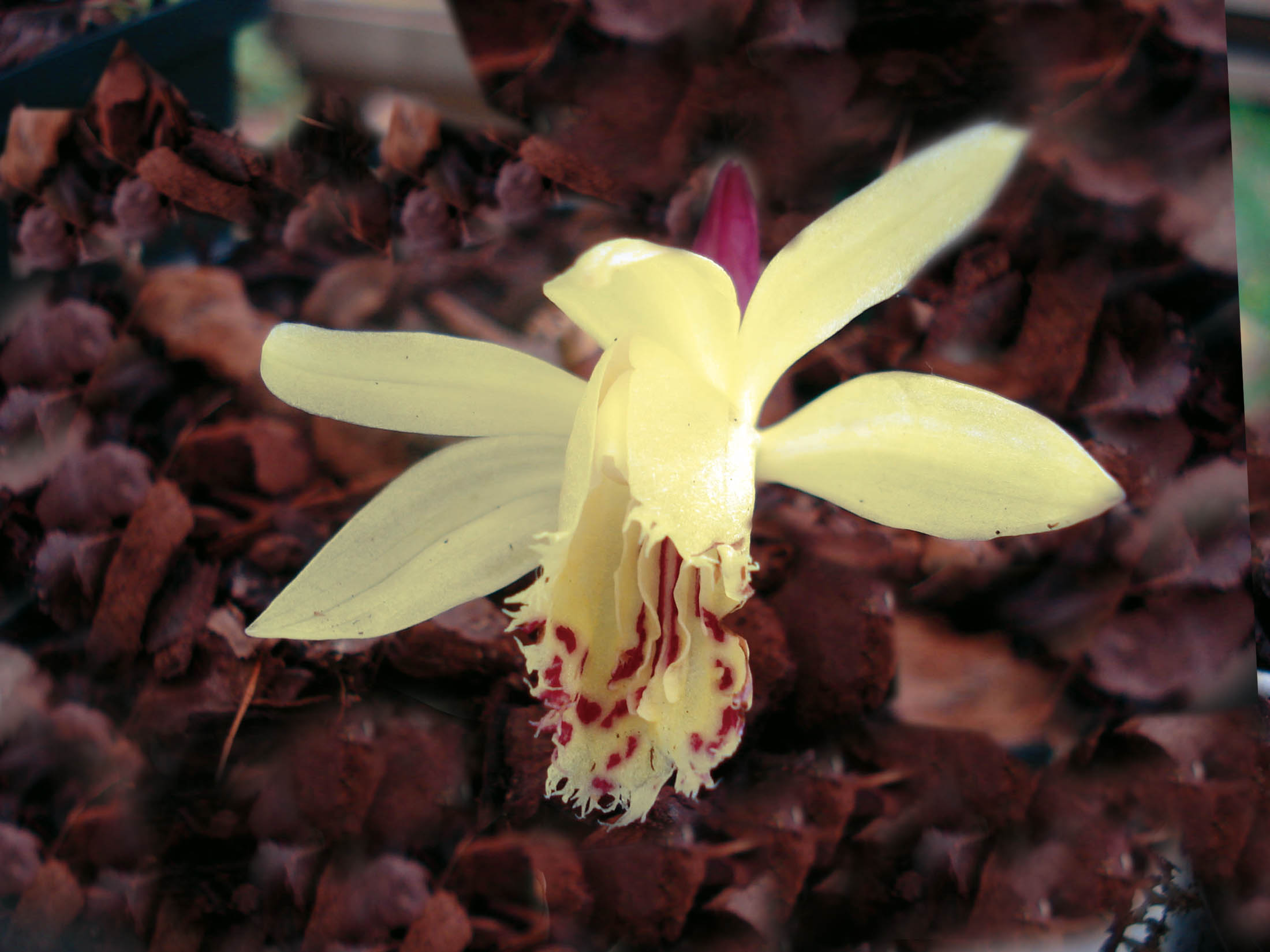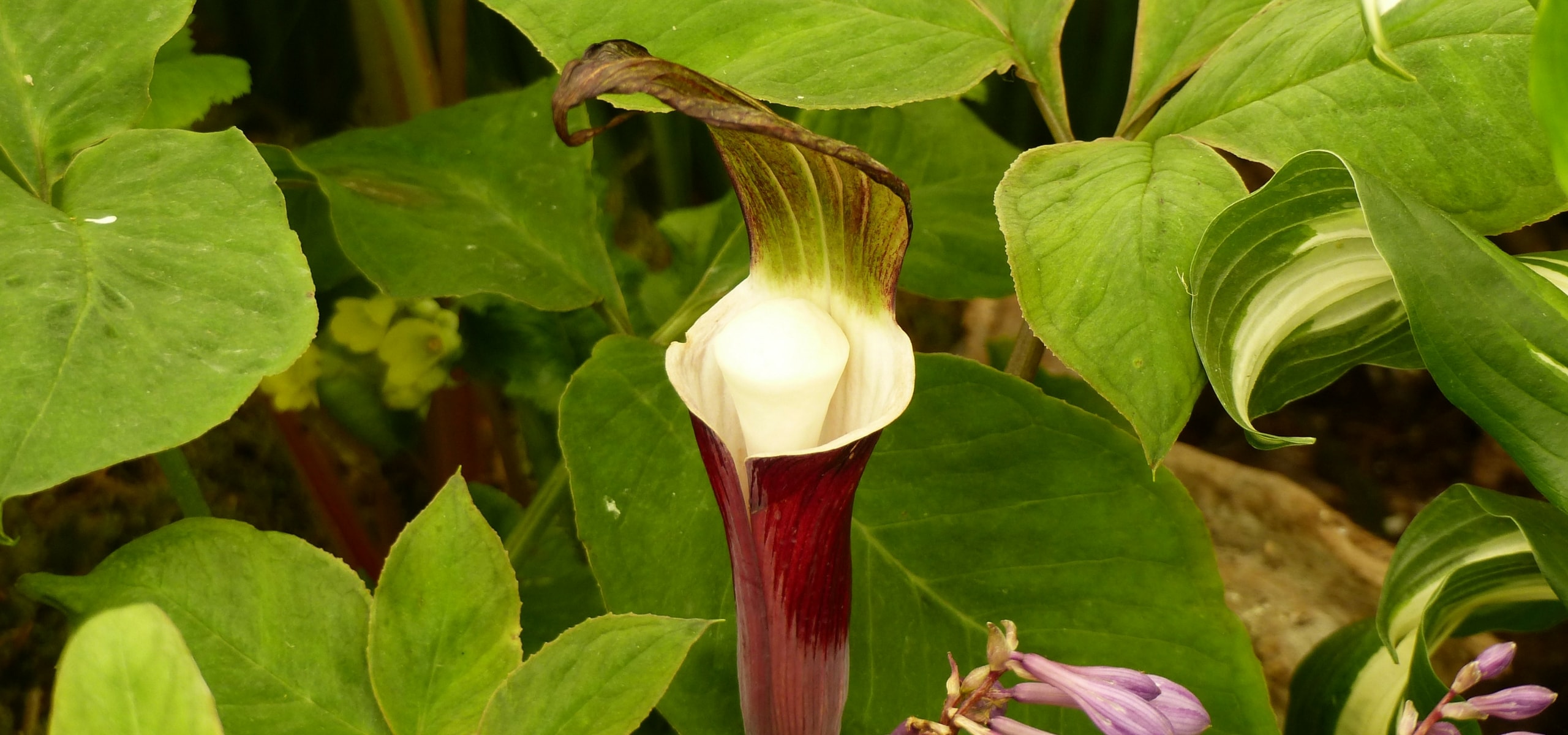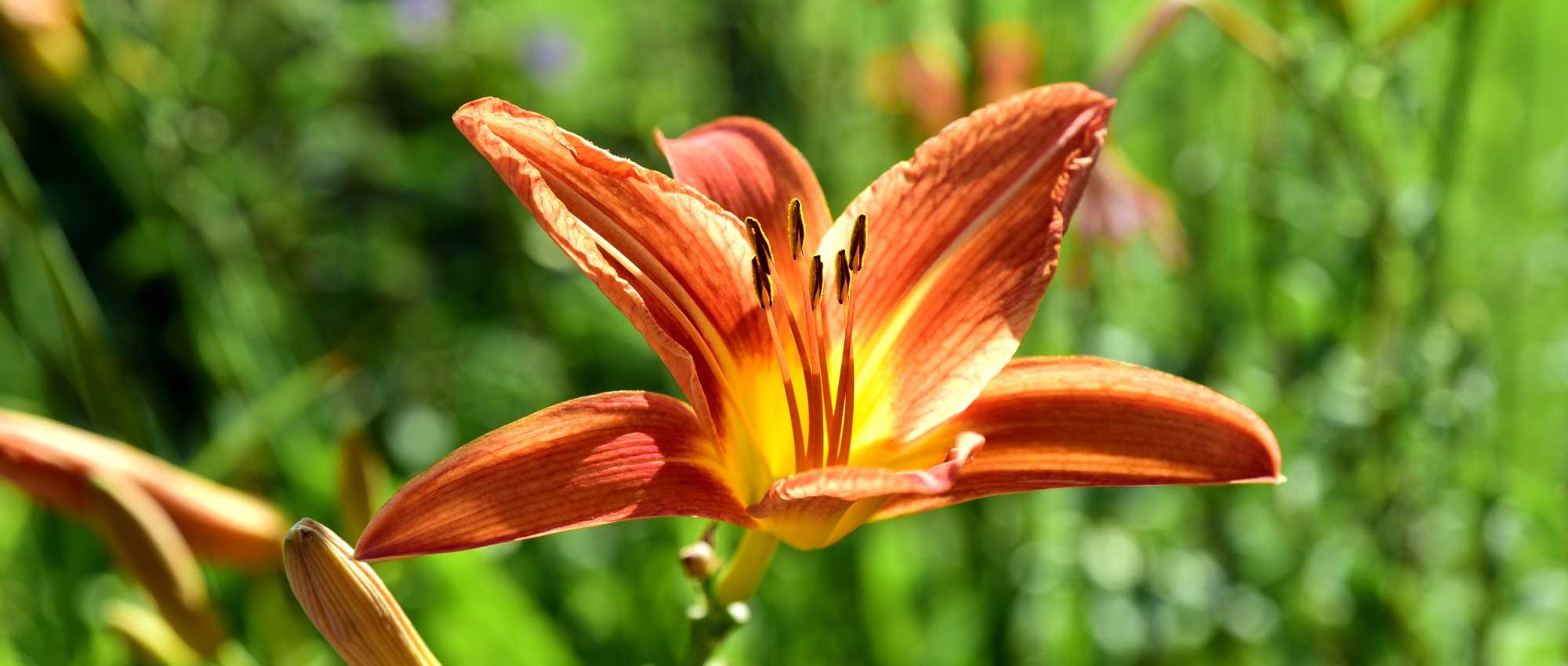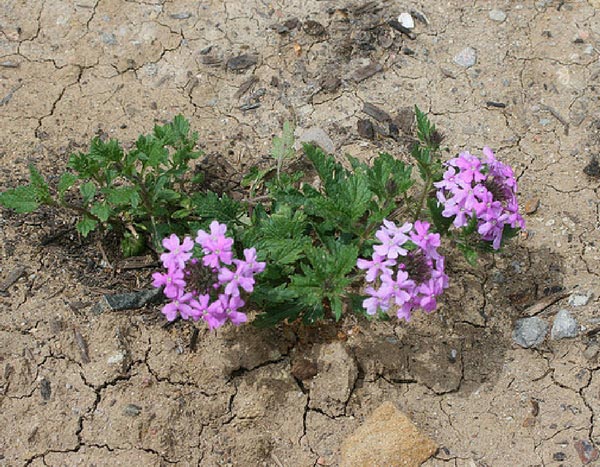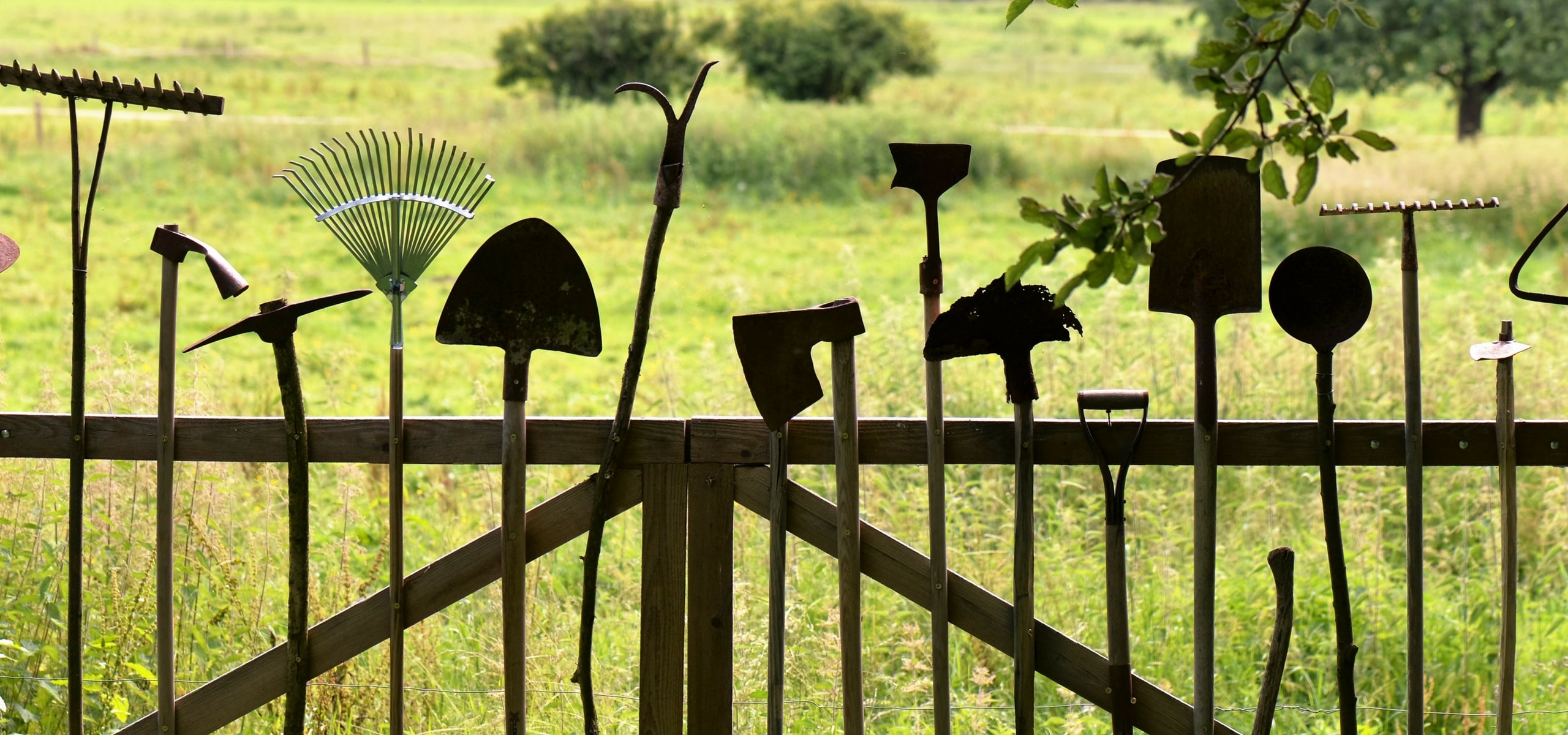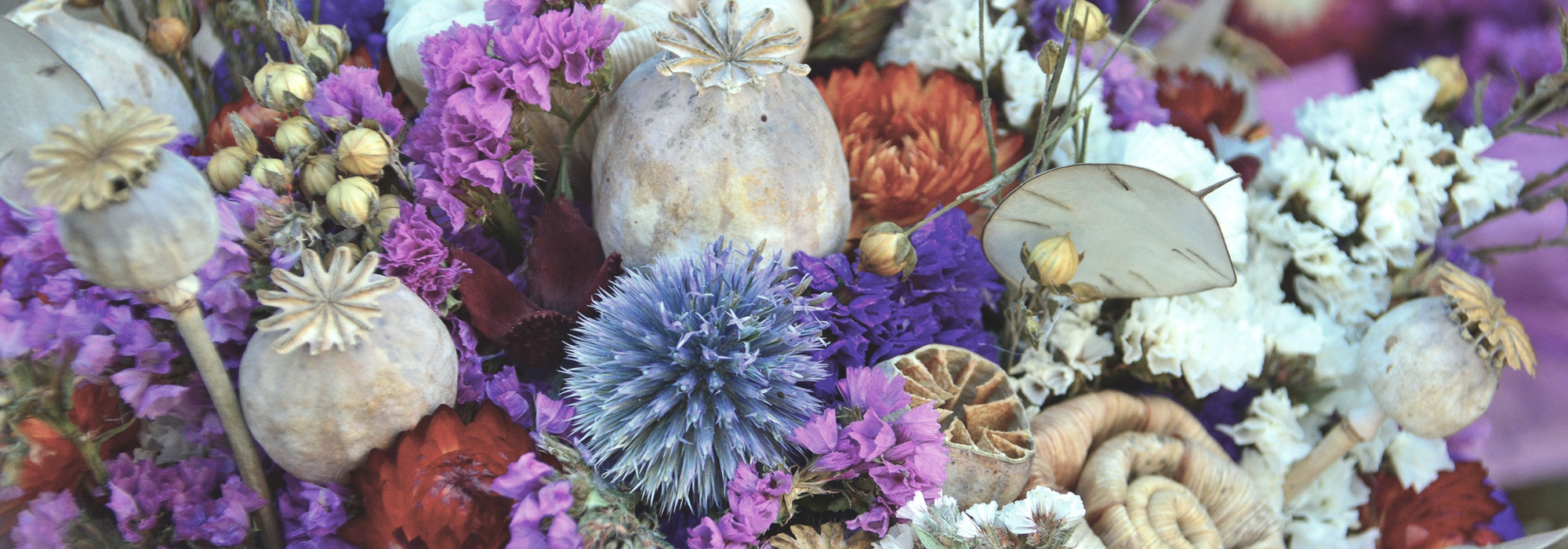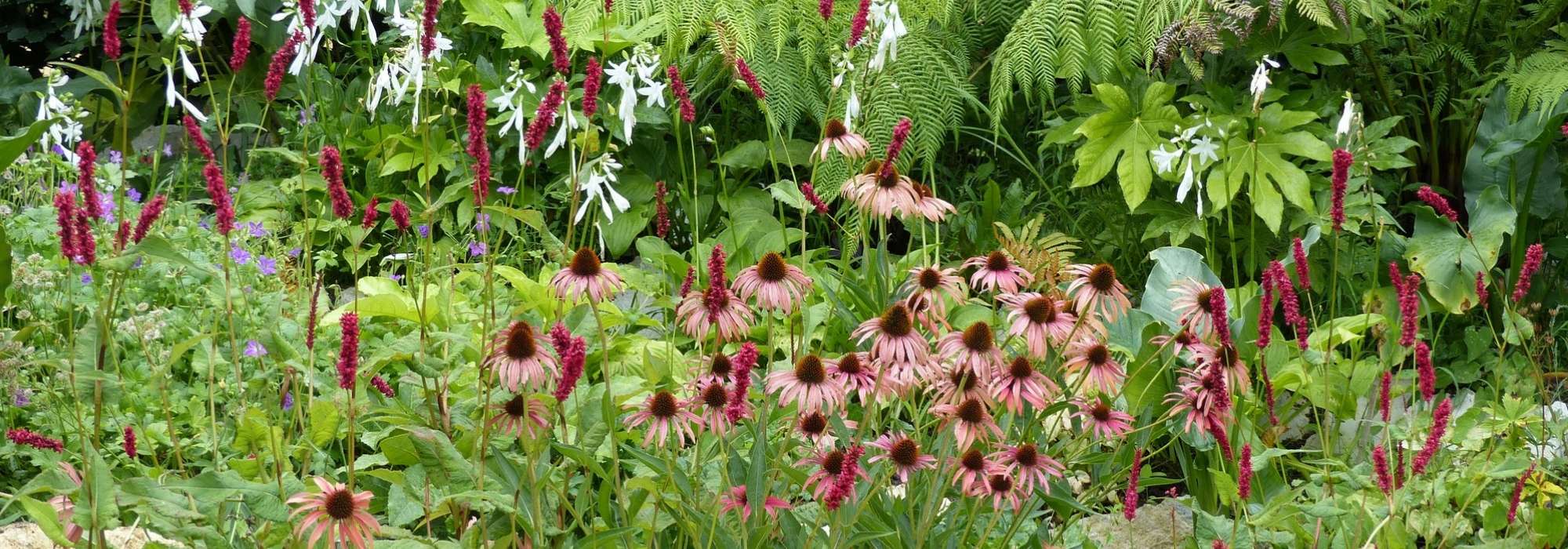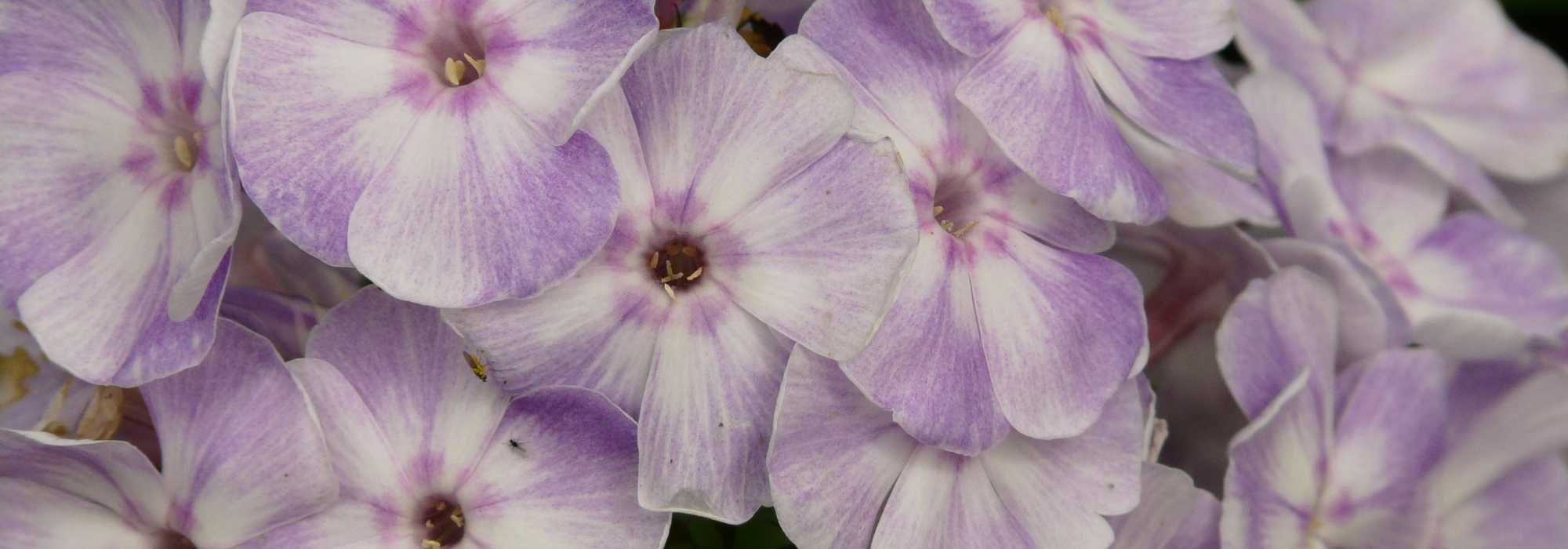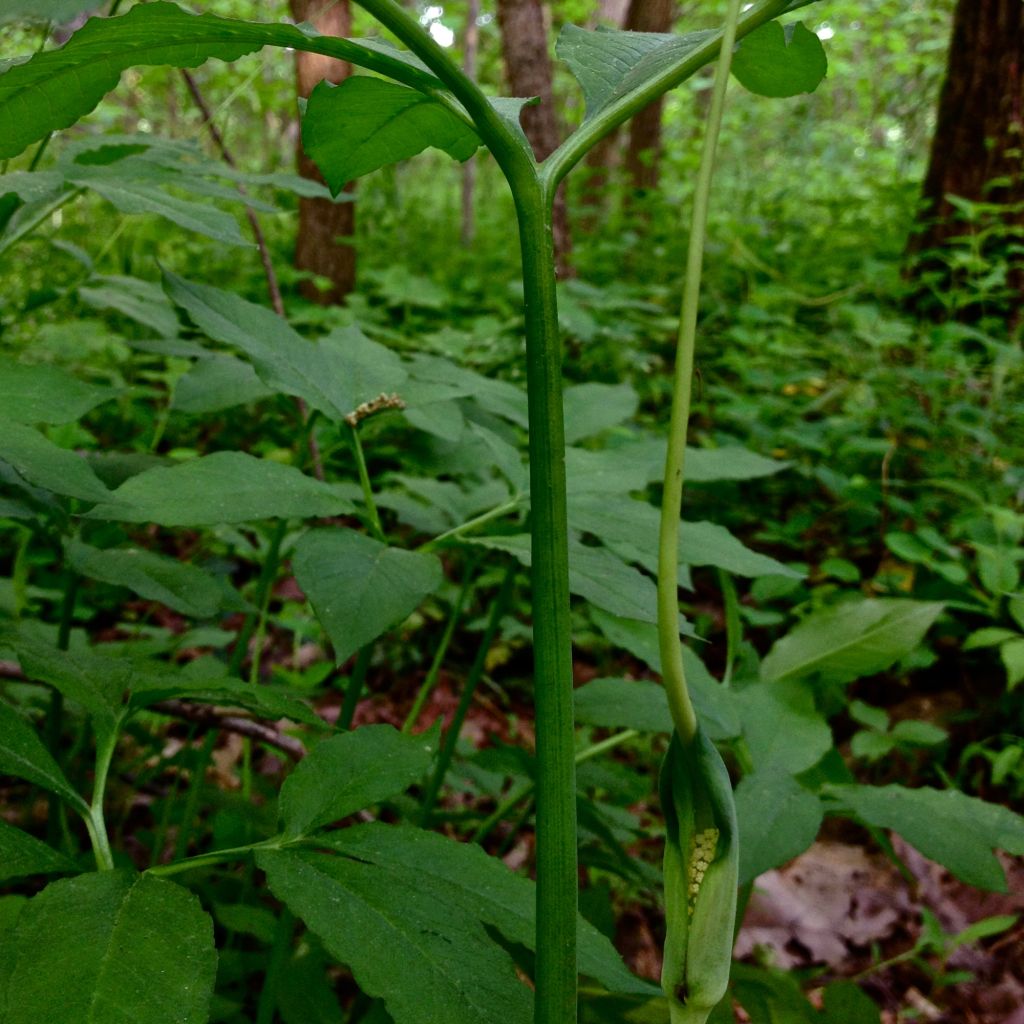

Arisaema dracontium
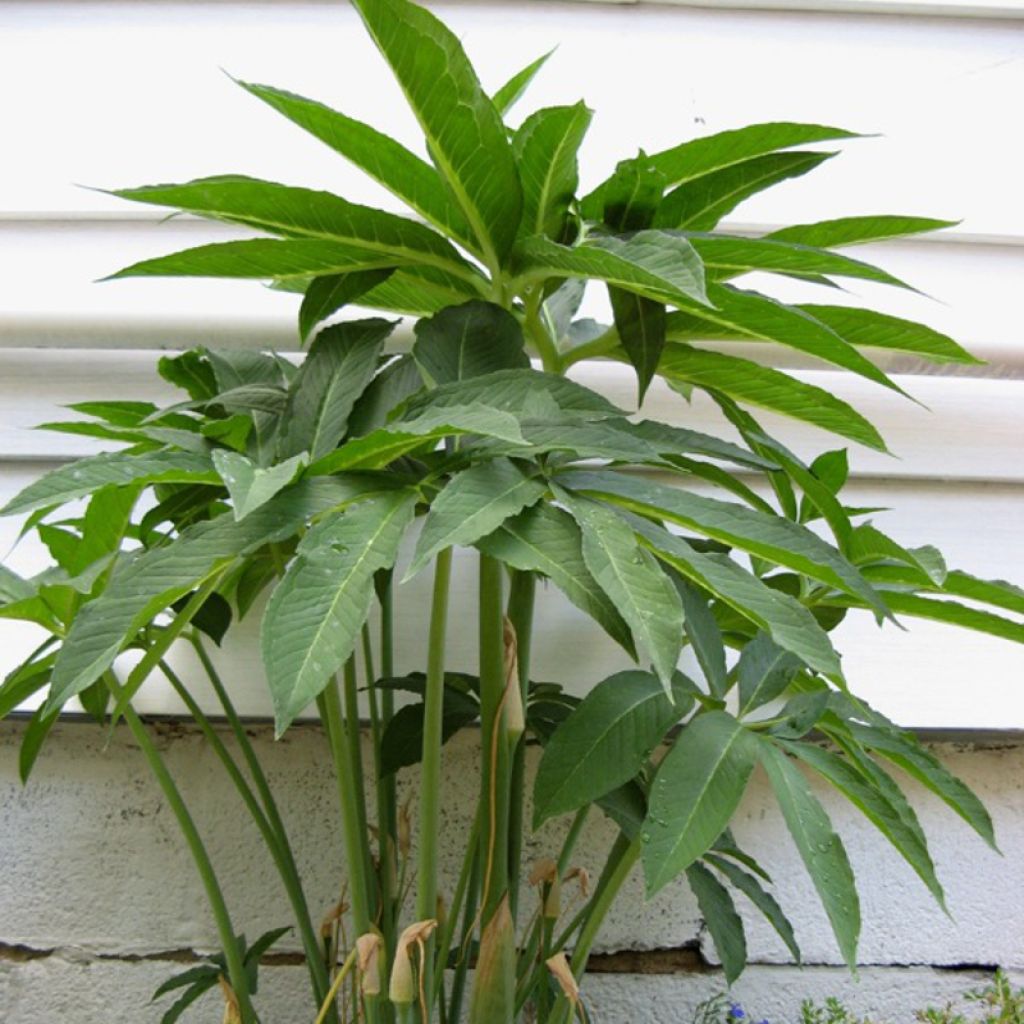

Arisaema dracontium
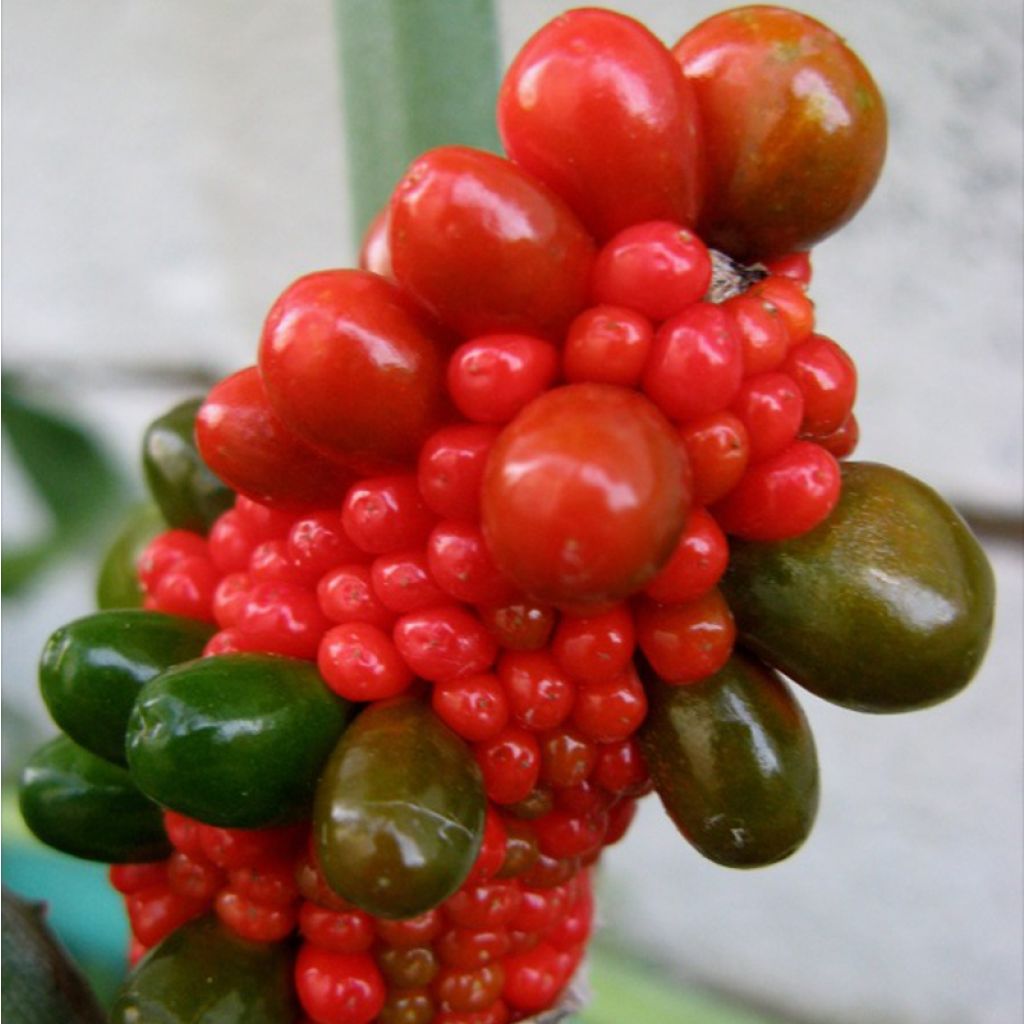

Arisaema dracontium
Arisaema dracontium
Arisaema dracontium
Green Dragon, American Wake-robin, Devil's Pulpit, Devil's Tongue, Dragon, Dragon Plant, Dragon Root, Dragon's Tail, Foetid Hellebore
Good young plant, easy.
Christian B., 04/09/2018
Special offer!
Receive a €20 voucher for any order over €90 (excluding delivery costs, credit notes, and plastic-free options)!
1- Add your favorite plants to your cart.
2- Once you have reached €90, confirm your order (you can even choose the delivery date!).
3- As soon as your order is shipped, you will receive an email containing your voucher code, valid for 3 months (90 days).
Your voucher is unique and can only be used once, for any order with a minimum value of €20, excluding delivery costs.
Can be combined with other current offers, non-divisible and non-refundable.
Why not try an alternative variety in stock?
View all →This plant carries a 12 months recovery warranty
More information
We guarantee the quality of our plants for a full growing cycle, and will replace at our expense any plant that fails to recover under normal climatic and planting conditions.
Would this plant suit my garden?
Set up your Plantfit profile →
Description
The Arisaema dracontium, also known as the Dragon Arum or Green Dragon in Quebec, is a medium-sized North American botanical species characterised by a narrow inflorescence in a beautiful chartreuse green spathe surrounding a whitish spadix, terminated by a fine orangish appendix, decorative bright red fruits, and a unique umbrella-shaped leaf. It is a hardy Arum that thrives in the shade of moist undergrowth, often on clayey or poorly drained soil.
The Arisaema dracontium belongs to the Araceae family, just like Arums and Jack-in-the-pulpits. Its origins range from Texas to Florida, and Ontario to Quebec. This species is currently endangered due to the disappearance of its habitat, mainly consisting of very wet areas in spring, more or less wooded. It is a herbaceous perennial plant with a globose corm, an underground storage organ close to a tubercle, reaching up to 8 cm (3in) in diameter. The vegetation emerges from the ground in the spring, reaching 75 cm (30in) to 1 m (3ft) in height depending on the growing conditions. It takes the form of a leafy stem that bears only one decorative leaf, measuring 20 to 50 cm (8 to 20in) in diameter, divided into 3 to 20 fan-shaped leaflets, bright green in colour. Flowering occurs between late May and July. From the ground emerges a typical flower heads of the Araceae family, consisting of a central spadix in the form of a narrow column, surrounded by a cone-shaped spathe. Here, the chartreuse green spathe forms an open cylinder around the tiny true flowers clustered on the spadix, which measures between 15 and 30 cm (6 and 12in) in length. The fruit is a bright red berry, measuring 5 to 10 mm (1in) in diameter. The plant goes into vegetative dormancy in late summer, in the form of a tubercle.
Arisaema dracontium is a curiosity, little known to gardeners, which can be planted in cool, lightly shaded and moist areas or at the edge of undergrowth, where the sun is filtered. It is a rather pretty but discreet plant, which can be associated with ferns, bamboo (Fargesia), hostas, Epimedium, Bégonia grandis, rhododendrons, azaleas, or oriental lilies.
Originating mainly from Asia, there are currently over 150 species of Arisaema. More than half of these species live in temperate zones and are therefore easily cultivable in our latitudes. They like wooded environments, humus-rich and cool soils, but not waterlogged for the most part.
Arisaema dracontium in pictures
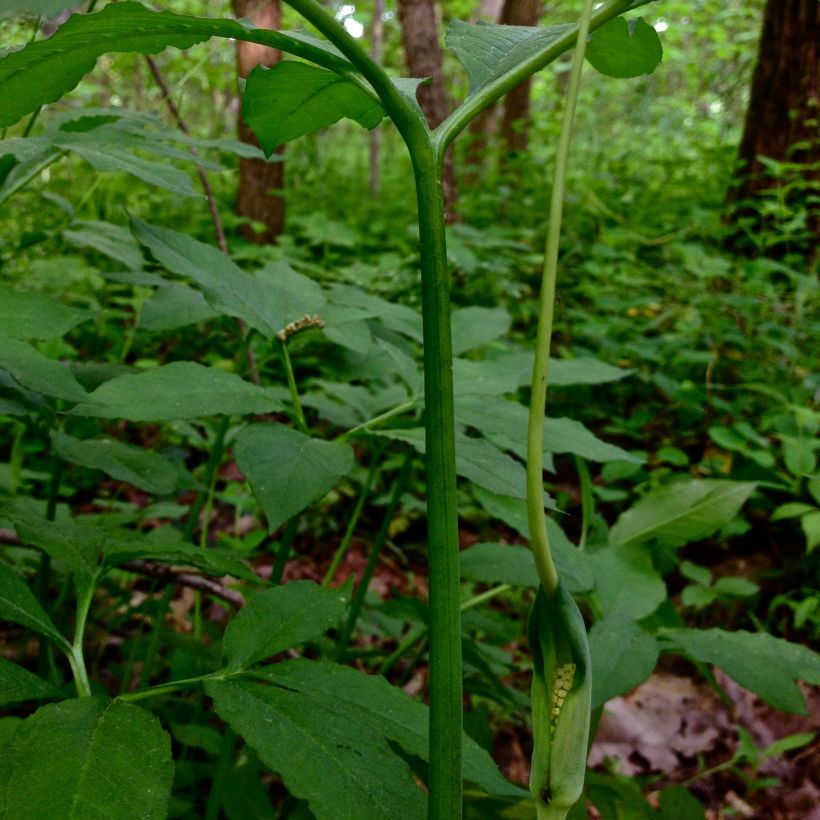

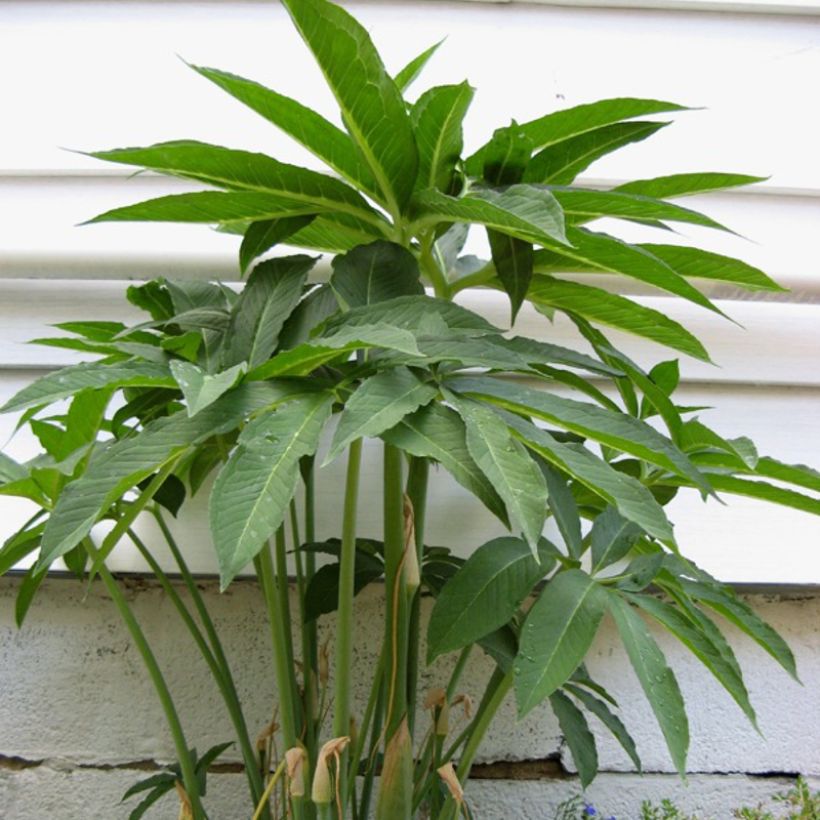

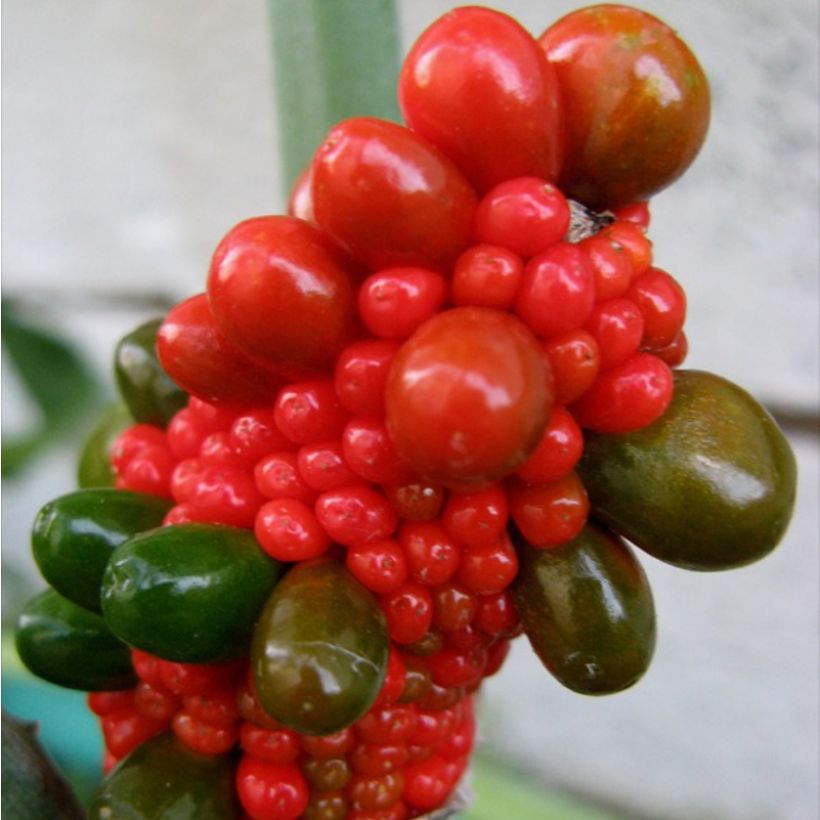

Flowering
Foliage
Plant habit
Botanical data
Arisaema
dracontium
Araceae
Green Dragon, American Wake-robin, Devil's Pulpit, Devil's Tongue, Dragon, Dragon Plant, Dragon Root, Dragon's Tail, Foetid Hellebore
North America
Planting and care
The Arisaema draconitum can be planted in any soil rich in humus, well-drained, in a semi-shaded position: a cool and moist woodland will suit it perfectly. It withstands our winters perfectly.
Planting period
Intended location
Care
Planting & care advice
-
, onOrder confirmed
Reply from on Promesse de fleurs
Haven't found what you were looking for?
Hardiness is the lowest winter temperature a plant can endure without suffering serious damage or even dying. However, hardiness is affected by location (a sheltered area, such as a patio), protection (winter cover) and soil type (hardiness is improved by well-drained soil).

Photo Sharing Terms & Conditions
In order to encourage gardeners to interact and share their experiences, Promesse de fleurs offers various media enabling content to be uploaded onto its Site - in particular via the ‘Photo sharing’ module.
The User agrees to refrain from:
- Posting any content that is illegal, prejudicial, insulting, racist, inciteful to hatred, revisionist, contrary to public decency, that infringes on privacy or on the privacy rights of third parties, in particular the publicity rights of persons and goods, intellectual property rights, or the right to privacy.
- Submitting content on behalf of a third party;
- Impersonate the identity of a third party and/or publish any personal information about a third party;
In general, the User undertakes to refrain from any unethical behaviour.
All Content (in particular text, comments, files, images, photos, videos, creative works, etc.), which may be subject to property or intellectual property rights, image or other private rights, shall remain the property of the User, subject to the limited rights granted by the terms of the licence granted by Promesse de fleurs as stated below. Users are at liberty to publish or not to publish such Content on the Site, notably via the ‘Photo Sharing’ facility, and accept that this Content shall be made public and freely accessible, notably on the Internet.
Users further acknowledge, undertake to have ,and guarantee that they hold all necessary rights and permissions to publish such material on the Site, in particular with regard to the legislation in force pertaining to any privacy, property, intellectual property, image, or contractual rights, or rights of any other nature. By publishing such Content on the Site, Users acknowledge accepting full liability as publishers of the Content within the meaning of the law, and grant Promesse de fleurs, free of charge, an inclusive, worldwide licence for the said Content for the entire duration of its publication, including all reproduction, representation, up/downloading, displaying, performing, transmission, and storage rights.
Users also grant permission for their name to be linked to the Content and accept that this link may not always be made available.
By engaging in posting material, Users consent to their Content becoming automatically accessible on the Internet, in particular on other sites and/or blogs and/or web pages of the Promesse de fleurs site, including in particular social pages and the Promesse de fleurs catalogue.
Users may secure the removal of entrusted content free of charge by issuing a simple request via our contact form.
The flowering period indicated on our website applies to countries and regions located in USDA zone 8 (France, the United Kingdom, Ireland, the Netherlands, etc.)
It will vary according to where you live:
- In zones 9 to 10 (Italy, Spain, Greece, etc.), flowering will occur about 2 to 4 weeks earlier.
- In zones 6 to 7 (Germany, Poland, Slovenia, and lower mountainous regions), flowering will be delayed by 2 to 3 weeks.
- In zone 5 (Central Europe, Scandinavia), blooming will be delayed by 3 to 5 weeks.
In temperate climates, pruning of spring-flowering shrubs (forsythia, spireas, etc.) should be done just after flowering.
Pruning of summer-flowering shrubs (Indian Lilac, Perovskia, etc.) can be done in winter or spring.
In cold regions as well as with frost-sensitive plants, avoid pruning too early when severe frosts may still occur.
The planting period indicated on our website applies to countries and regions located in USDA zone 8 (France, United Kingdom, Ireland, Netherlands).
It will vary according to where you live:
- In Mediterranean zones (Marseille, Madrid, Milan, etc.), autumn and winter are the best planting periods.
- In continental zones (Strasbourg, Munich, Vienna, etc.), delay planting by 2 to 3 weeks in spring and bring it forward by 2 to 4 weeks in autumn.
- In mountainous regions (the Alps, Pyrenees, Carpathians, etc.), it is best to plant in late spring (May-June) or late summer (August-September).
The harvesting period indicated on our website applies to countries and regions in USDA zone 8 (France, England, Ireland, the Netherlands).
In colder areas (Scandinavia, Poland, Austria...) fruit and vegetable harvests are likely to be delayed by 3-4 weeks.
In warmer areas (Italy, Spain, Greece, etc.), harvesting will probably take place earlier, depending on weather conditions.
The sowing periods indicated on our website apply to countries and regions within USDA Zone 8 (France, UK, Ireland, Netherlands).
In colder areas (Scandinavia, Poland, Austria...), delay any outdoor sowing by 3-4 weeks, or sow under glass.
In warmer climes (Italy, Spain, Greece, etc.), bring outdoor sowing forward by a few weeks.






























